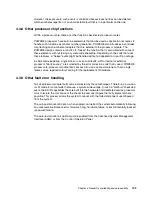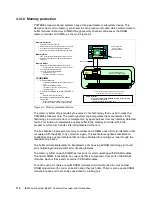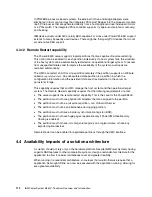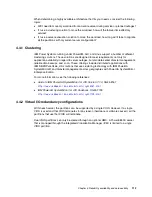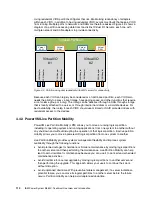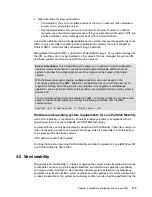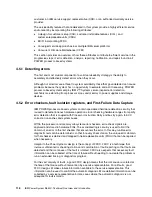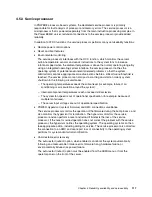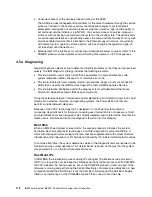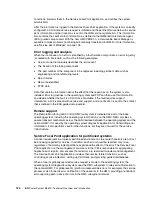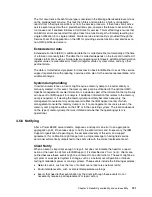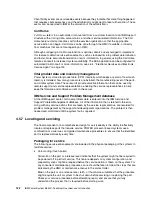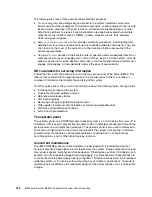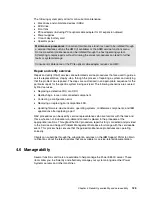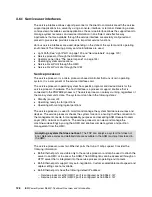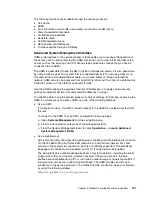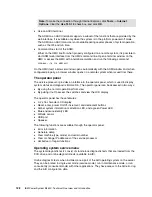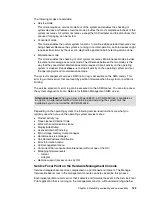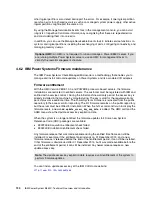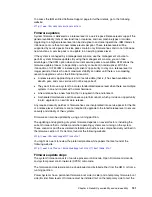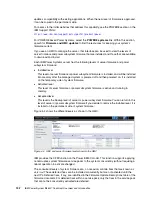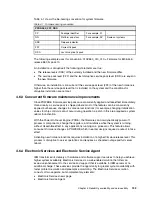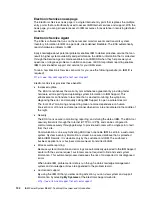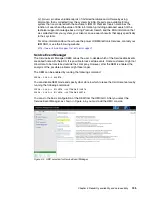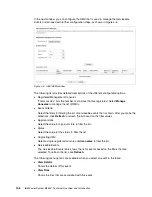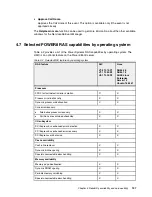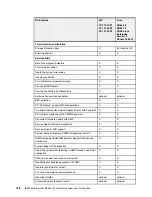
Chapter 4. Reliability, availability, and serviceability
123
Tool-less design
Selected IBM systems support tool-less or simple tool designs. These designs require no
tools, or require basic tools such as flathead screw drivers, to service the hardware
components.
Positive retention
Positive retention mechanisms help ensure proper connections between hardware
components, such as from cables to connectors, and between two cards that attach to
each other. Without positive retention, hardware components risk becoming loose during
shipping or installation, which prevents a good electrical connection. Positive retention
mechanisms such as latches, levers, thumb-screws, pop Nylatches (U-clips), and cables
are included to help prevent loose connections and aid in installing (seating) parts
correctly. These positive retention items do not require tools.
Light Path
The Light Path LED function of the Power E850C helps with parts that can be replaced by the
user. In the Light Path LED implementation, when a fault condition is detected on the
Power E850C server, an amber fault LED is illuminated (turned on solid), which also
illuminates the system fault LED. The Light Path system pinpoints the exact part by
illuminating the amber fault LED that is associated with the part that needs to be replaced.
The service representative can clearly identify components for replacement by using specific
component level identity LEDs. The system can also guide the service representative directly
to the component by signaling (flashing) the component identity LED, and illuminating the
blue enclosure identity LED to identify the server in a busy data center.
After the repair, the LEDs shut off automatically after the part is replaced. The Light Path
LEDs are only visible while the system is powered on or has standby power connected.
IBM Knowledge Center
IBM Knowledge Center provides you with a single information center where you can access
product documentation for IBM systems hardware, operating systems, and server software.
The latest version of the documentation is accessible through the Internet. In addition, a
CD-ROM based version is available.
The purpose of the IBM Knowledge Center, in addition to providing client-related product
information, is to provide softcopy information to diagnose and fix any problems that might
occur with the system. Because the information is electronically maintained, changes due to
updates or addition of new capabilities can be accessed by service representatives
immediately.
The IBM Knowledge Center contains sections specific to each server model, and include
detailed service procedures for a number of potential repair situations. The service procedure
repository for a particular server model can be found in the “Troubleshooting, service and
support” section.
The IBM Knowledge Center can be found online at the following link:
http://www.ibm.com/support/knowledgecenter
Service labels
Service representatives use these labels to assist with maintenance actions. Service labels
are in various formats and positions, and are intended to transmit readily available information
to the service representative during the repair process.
Summary of Contents for E850C
Page 2: ......
Page 36: ...22 IBM Power System E850C Technical Overview and Introduction...
Page 114: ...100 IBM Power System E850C Technical Overview and Introduction...
Page 154: ...140 IBM Power System E850C Technical Overview and Introduction...
Page 158: ...144 IBM Power System E850C Technical Overview and Introduction...
Page 159: ......
Page 160: ...ibm com redbooks Printed in U S A Back cover ISBN 0738455687 REDP 5412 00...

